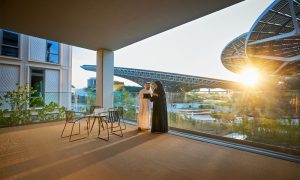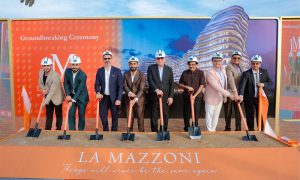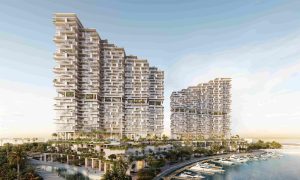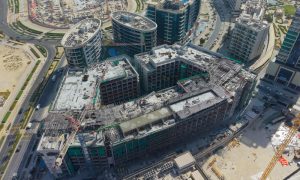Drilling down: How the oil price slump is affecting the construction industry
Overseas real estate investment was down 41% from 2015 to 2016, with sale prices under sustained pressure, expert says
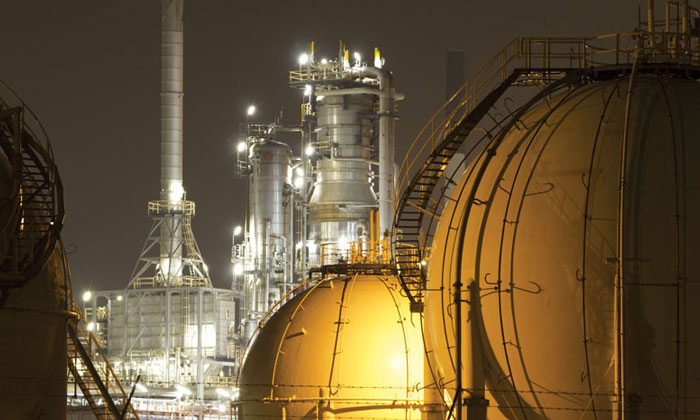
2016 was the worst year on record in terms of the value of project contracts awarded across all sectors in the GCC region – construction, transport, oil & gas, power, chemicals, industry and water – according to data compiled by Meed, a business information company. This was because of the slump in oil prices, which is likely to have a knock-on effect on spending across the GCC, with large projects in the region expected to continue to feel the after-effects of the slump, despite signs of recovery.
Data shows that the value of infrastructure contracts awarded slipped by 44% to $100 billion, compared to the year before, which itself was down to $178 billion from a high of $186 billion in 2014. In addition, data shows the drop in oil prices from late 2014 has resulted in depressed spending across the board.
However, the start of the year showed a rebound of sorts, which was expected to help reignite project spending. This has been helped by GCC governments’ commitment to helping diversify revenue streams within their economies. One of the key non-oil sectors benefiting from this has been real estate, hospitality and construction (RHC).
While the oil price dip has had a negative impact on the RHC sector across the GCC, causing a slowdown that is expected to continue for at least another year, a report from Ernst & Young (‘The Impact of Decreasing Oil Prices on the GCC RHC Market’) indicates. However, with events such as Expo 2020 Dubai and the 2022 Qatar World Cup on the horizon, along with a number of other initiatives in place, the RHC sector is expected to see a boost.
Looking at the construction industry value as a percentage of GDP between 2014 and 2017, the E&Y report states that the GCC construction industry value is projected to grow at a compound annual growth rate (CAGR) of 9.1% during 2014-2017.
“Positive demographics, government initiatives and rising tourism activities drive the growth of the industry,” it explains. “Economic diversification keeps the commercial real estate market resilient to external pressures, although regional tensions may intercept potential investment.”
David Clifton, regional development director at Faithful + Gould, adds that oil prices have steadied in the $50-55/barrel range, following broad compliance with the first round of OPEC production cuts. With the potential for further cuts on the horizon, a range of $50-60/barrel for 2017 is probable. As a result, Saudi Arabia is looking to rebalance its budget deficit by 2020, with further government spending reviews undertaken to achieve this and various funding and bond options examined.
In contrast, oil prices have underpinned the UAE’s federal level surety in budget forecasts, Clifton points out. The UAE’s fiscal position remains positive thanks to significant local and overseas reserves, along with prudent budget allocations, he adds.
“Overseas real estate investment was down 41% from 2015 to 2016, which has meant sale prices have been under sustained pressure,” he says. “This is partly due to the strong dollar [that the dirham is pegged to], which has led to numerous schemes being slowed. 2017 is beginning to see a small increase in investments, which will start to drive growth, especially when combined with new funding streams coming to market.”
“The start of 2017 (Q1) has been poor in terms of contracting awards in the UAE and the wider GCC, with some of the lowest volumes on record. However, the pipeline and sentiment in general is more positive. With Dubai committed to $2.99 billion of awards for the Expo 2020 site and the private sector likely to take a positive view on this, Q2 should see improvements.
“The danger of delays to contract awards is compounded by the approach of Ramadan and the summer months of low activity. This could see our $45bn forecast of awards for the year compressed into Q3+Q4, constraining construction capacity and possibly delaying some schemes.”
Speaking during a ‘LiveTalk’ organised by F+G and hosted by Clifton, Ranya Afifi, network director – MENA at the Economist, adds that oil prices are moved by a variety of factors, such as supply and demand, the value of the US dollar, investor perception and the pricing strategy of oil producers.
“Supply and demand is an extremely fluid scenario. We don’t know how profitable shale oil producers are anymore. Once upon a time, when oil was going at $110 a barrel to $50, we saw a lot of shale oil producers pulling off the market. But today, they’re in the market and they’re actually pumping more. Which leads us to believe that their profit – or their break-even point – is becoming lower and lower.
“Technological advancements are changing the supply side of the story. When we look at demand – it is growing. There is population growth worldwide, and even though there is a drive towards alternative energy, crude oil is still the cheapest source of energy,” she asserts.
Looking at how the real estate and construction sector might be affected in the GCC, Afifi says it’s important that expectations be lowered for the coming few years, while alternative financing methods will have to be considered due to the lack of funding in the market.
“We can’t expect there to be the same volume of business that we had previously. There are opportunities, but these opportunities are going to have to rely on the private sector. Basically, they will have to contribute more than just ticking a project award and then completing the process without contributing any financing themselves. I think the whole point of PPP is to add that liquidity or to add that financing, so that the government doesn’t have to bear the brunt of it.”
Clifton adds that alternative financing solutions such as independent water & power projects (IWPP) and public-private partnerships (PPP) are firmly on the agenda in Saudi Arabia.
“The first quarter has seen some significant tenders on this basis. They include IWPPs and PPPs for GACA for three key airports – Hail and Al-Qassim, as well as PPP tender submissions for Taif Airport. This bodes well for the short term as the industry hunts for positivity and work. This trend is expected to increase, although with some caution as over-exposure to alternative finance can cause long-term fiscal issues,” he concludes.
